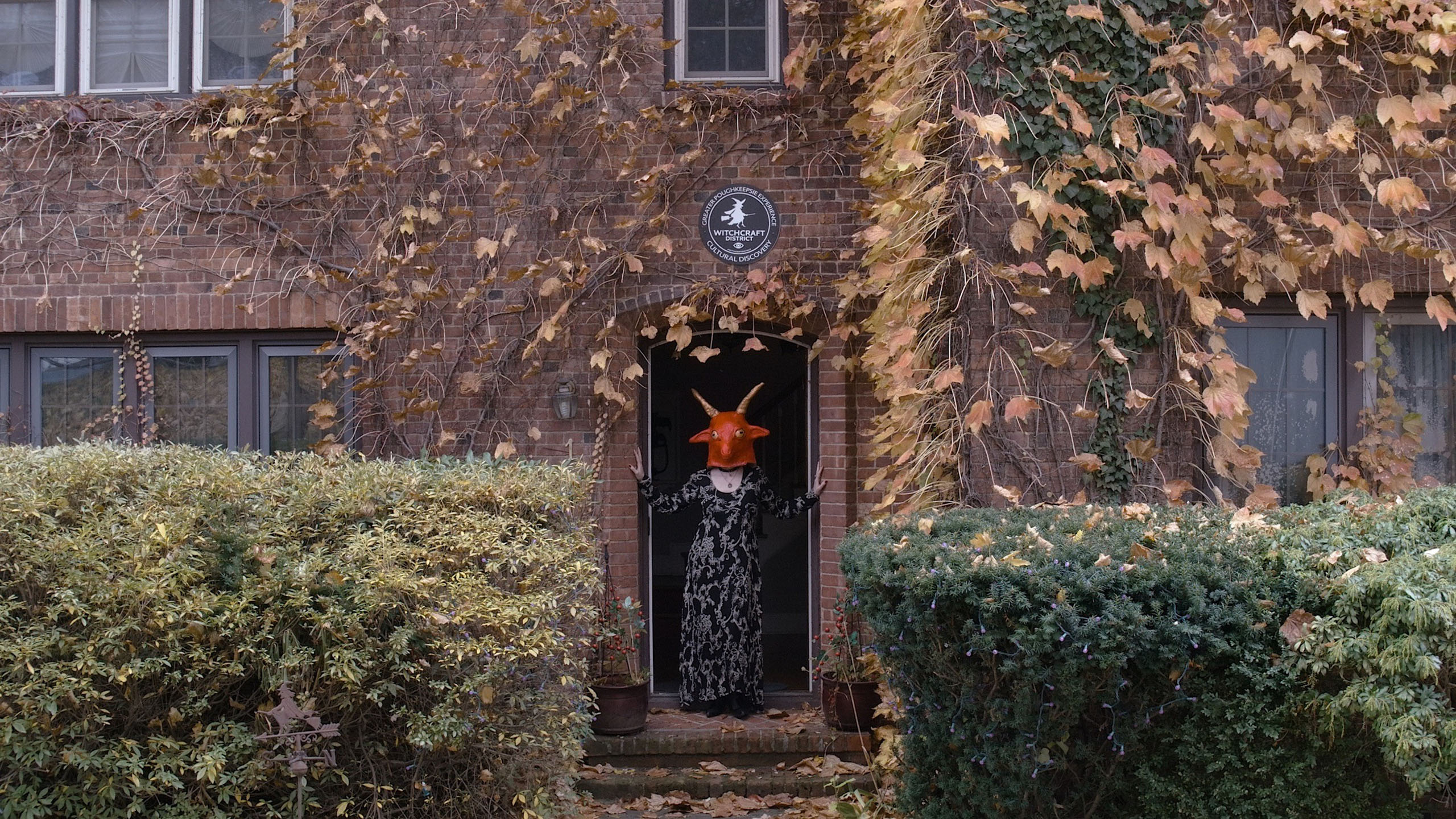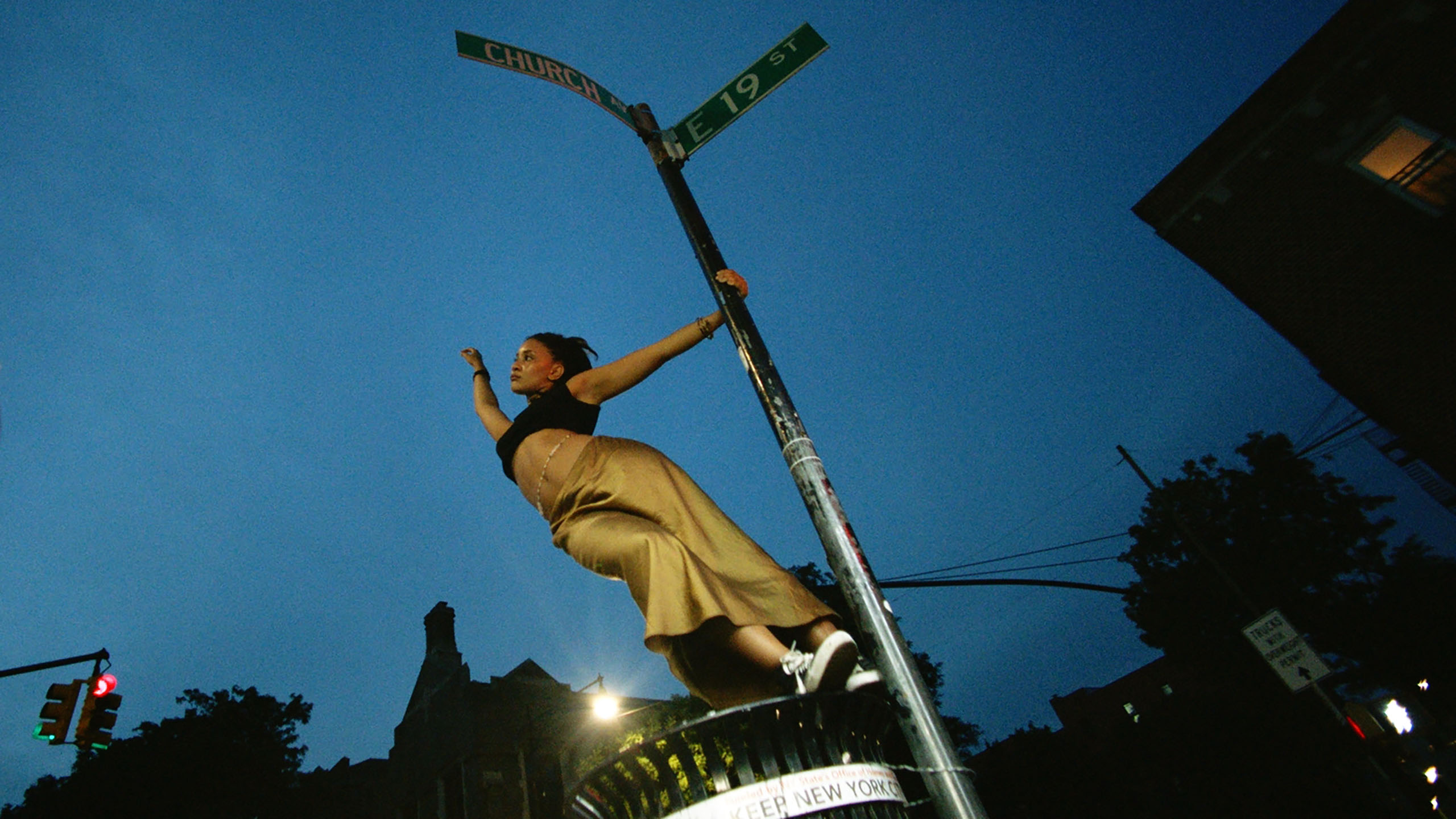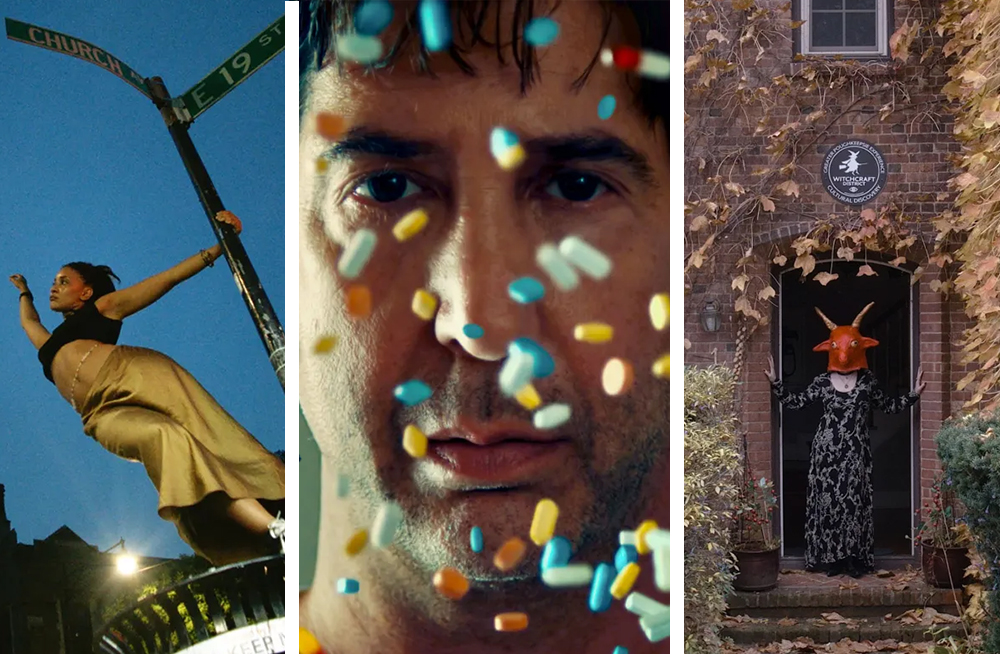If you want to find who the next fascinating and creative voices in cinema are early on in the year, then go seek out the titles premiering in the NEXT section of the Sundance Film Festival. Each year, the team in charge of the section of the festival chooses an array of distinctive and unique films—giving us the first glimpse of filmmakers who might change the cinematic landscape in the future. There is an exciting selection of films for the 2024 rendition of the festival. In this capsule reviews piece, I will be talking about three NEXT section titles that impressed me in their manner of storytelling and influences, some more than others: “Little Death,” “Realm of Satan,” and “Tendaberry.”
‘Little Death’ (Directed by. Jack Begert)

The first film I will discuss in these NEXT section capsules is “Little Death.” Well, technically, this isn’t only one film. It is two pictures into one—separate canvas in a 100-minute runtime. One is the story of a TV screenwriter having a midlife crisis. The other is about survival, where two young adults are having one harrowing night in the fiery streets of L.A. You don’t know any other details, and the overall skepticism for this project is rising. There’s always the issue that a project that divides itself into separate, yet thematically equal, pieces will always leave more to be desired from each part. This experiment asks audiences to be patient and bask in the experience rather than dismiss it immediately.
Two-headed beasts films must also contain some sort of restraint from the filmmaker. Each move, decision, or big swing must equate to a greater purpose. It needs to amount to a proper thematic conclusion that warrants a fruitful climax. If enough thought is put into each segment where it warrants the separation, then you have an enticing piece. Unfortunately, “Little Death“ doesn’t have that. And I had a lot of interest in the film. Filmmakers who want to create something of this narrative stature rarely get the money to create their complete vision. The big names backing them (Darren Aronofsky, Andy Cohen) offer the filmmaker space to free his mind. But how it unfolds itself comes out rather shoddy and unfocused.
Who is at the helm of this venturous and ambitious project? The on-the-rise music video director Jack Begert is known for his work with Olivia Rodrigo, Doja Cat, Dominic Fike, and ScHoolboy Q. He has decided to venture into another artistic realm, playing with the cinematic format. I know that most music video directors who transition to film don’t tend to become great talents (the prime example of this is McG, who I consider one of the worst filmmakers of the 21st century). However, from what I have seen, Begert has a unique voice and flair regarding the visuals of his videos. They are slick but, most importantly, tell a story rather than primordially “look cool.”
His visual techniques pave the way for the film’s intriguing structure. As mentioned earlier, each segment contrasts one another in terms of its style and ideas yet maintains a union in its thematic conceptualization—in this case, the dangers of drug addiction (and the cause-and-effect damage it has on the user afterward). Begert captures the first part in digital; the other, being the opposite, has celluloid. While one has a more cynical tone, the other is empathetic. The first half might remind viewers of Ari Aster and Charlie Kaufman’s work, where we see a troubled, frustrated TV writer named Martin (David Schwimmer) on the verge of a midlife crisis. He’s a man who fuels his daily living by indulging in self-loathing and strong medications, somewhat in the same vein as Joaquin Phoenix’s Beau.
After years of being incredibly unhappy with how his career has turned out, Martin will finally get to direct his first feature based on his childhood. But there’s a problem. One of the financiers wants him to change the lead role a tad, from male to female. Martin doesn’t want to do that, as the story is his. Yet, he doesn’t have a choice to do otherwise; hence, the next time we see him, his character is played by a different actress (Gaby Hoffman). This section shows the initial glimpses of the project’s ever-changing nature; surrealism and animation meet with one another to portray the fractured mind of the honest Martin. As he ventures into the dream world, Begert’s direction begins to get loose, and he gets weirder in the process.
In the film’s other half, we meet Kate (Talia Ryder, who, acting-wise, can’t do any wrong and is on a roll in the independent cinema circuit) and AJ (Dominic Fike), two young adults trying to right their wrongs after a botched heist. The two search for their stolen car, go to a party, and visit a local drug dealer for some goods. Where does their journey end? Having brunch in an L.A. deli. While there are moments of violence here, this segment is far more tame. The emotions here are more humanistic and grounded, unlike Martin’s chaotic venture. Both parts of “Little Death“ want to talk about the towering impact drugs have on people, whether they are middle-aged adults or younger. Jack Begert doesn’t want to do a film that will remind you of the other pictures about drug addiction.
He wants to leave an impression on the viewer by taking his flashy style of music-video directing into another format. And, in a way, that’s part of the problem. His visual language and aesthetic, which work in a shorter frame, do not translate appropriately into this more extensive one. However, the biggest problem of them all is that, by dividing each story in half—the two “completing” each other thematically—Begert ends with dual half movies. Both stories feel incomplete, leaving the viewer wanting more out of each story. The film has little to no interest in going into a full deep-dive into its characters. This is why it culminates in an exercise of style and flash rather than a piece with fully-fledged thematic exploration. Of course, you get reactionary moments from its genre-bending and mood-swinging nature. But all of that doesn’t amount to something that entices the viewer.
Grade: C-
‘Realm of Satan’ (Directed by. Scott Cummings)

The second NEXT title I will discuss is a documentary made in collaboration with the Church of Satan, Scott Cummings’ feature-length debut, “Realm of Satan.” We have reached a decade after the editor-turned-filmmaker, known for his work with Eliza Hittman (“Never Rarely Sometimes Always,” “Beach Rats”) delivered his debut, “Buffalo Juggalos”—an exploration of the Juggalo subculture in Buffalo, New York. While that documentary by itself isn’t anything outstanding or grand, it does demonstrate Cummings’ interests as a filmmaker. He wants to cover various moieties around the United States, particularly those most of the country sees with a side-eye. It is honestly quite interesting how Cummings chooses each subject. He makes sure that his vision has significant amounts of respect and curiosity toward learning about that subculture.
This same technique translates into his latest work, “Realm of Satan,” although the project doesn’t entice as one would hope. A quote from the satanic bible, put on the screen in crimson red, introduces the film. “This is the age of Satan. Satan rules the Earth!” We hear the sounds of a goat heavily heaving in the background as the title card slowly disappears. The black screen transitions into a sequence where that same goat is giving birth. Initially, you begin to think that Cummings is going to take an arthouse approach to documenting how this half-century-old religion has dedicated itself to celebrating carnality and individualism through the figure of Satan. But sooner rather than later, you learn this won’t happen.
Instead, we get an array of scenes, without much dialogue or exposition, where more than a handful of Satanists go along with their day before they head off into the night for their ceremonial rituals—praising the lord of the underworld. With no plot or structure in sight, Scott Cummings puts us inside the houses and establishments where these people spend their time. We are going face to face with them as they (respectively) water their gardens, paint their faces, and even do magic tricks. A few scenes draw some intrigue, most centered on the meaning this religion has on these people. You see them going on with their day and, as the hours pass, prepare for a ceremony.
The reason why I had an interest in the project is to learn why people decided to join this subculture with plenty of shade. I wanted to hear about the Satanists’ experiences with this religion, which has some form of taboo attached to it. However, we are getting surface-level visualization and speechless scenes. Your interest and thirst for knowledge on this topic dwindle amidst each small-scale scene. I was waiting for a person, or Cummings himself, to begin asking questions to the people in front of the camera. What drove you to join this religion? How has it impacted your life? Do you feel more accessible within the confines of Satanism or outside of it? These are examples of some questions I would have liked this documentary and the people behind it to ask.
I know it was made in collaboration with the Church of Satan. But the documentary would have benefited from asking some of its members these questions. It is there where you find its potentially profound sense of purpose. Immediate comparisons with Penny Lane’s Hail Satan? are inevitable. But the difference between these two projects is that the 2019 documentary has a reason for why it was made: dispelling the myths that labeled Satanists as blood-thirsty Devil worshippers. Meanwhile, Scott Cummings’ first piece of work since 2014 doesn’t have that thesis or crux on its backbone to warrant the project’s existence. “Realm of Satan“ is a frustrating watch, not because of its narrative-less structure and imagery, but due to its restriction in research and curiosity.
Grade: D
‘Tendaberry’ (Directed by. Haley Elizabeth Anderson)

The final film from the NEXT section I will be talking about is Haley Elizabeth Anderson’s fascinating and challenging debut, “Tendaberry,”which is easily the best one out of the three by a mile wide. This may be a small-scale indie-drama at first glance, yet it develops into a fascinating character study about loneliness, as well as an ode to Brooklyn, New York. If you recognize where the film’s title is taken from, Laura Nyro’s magnificent 1969 record ‘New York Tendaberry’, you already know where this film is going thematically. In the title track from that record, Nyro sang about the allure and darkness that made its way through New York. She explores the feelings of displacement and identity amidst feeling a deep connection with the city.
Nyro describes it as a city full of contradictions, where the environment of its non-stop motions intertwines with an overwhelming feeling of not being able to conform to it. The most crucial detail arrives near the end of the track. The American songwriter and singer mentions that we can find meaning in a place we deem a lost cause. In a way, Haley Elizabeth Anderson constructs her debut in the same manner as Nyro’s beautiful hymns. Like the song, “Tendaberry” has many ups and downs of raw emotions that feel incredibly palpable when the curtains close.
The first few images of the film dedicate themselves to showing Haley Elizabeth Anderson’s love and worries. Images of Coney Island, from archive footage from its early days back in 1911 to the recordings of videographer Nelson Sullivan, are crossed with the present-day story “Tendaberry” wants to tell. As these images are played, which is a recurrent motif, you hear the poetic narration of the film’s protagonist. These are the first glances of Anderson’s love letter to the city. At the center of this tale is Dakota (Kota Johan in a marvelous and delicate breakout performance), a twenty-three-year-old woman searching for meaning and identity in a place constantly shifting. Dakota does whatever she can to make ends meet. She would sing in the subway for quick tips or work at a retail store, strip club, or local market.
This might be a stressful routine that she embarks on weekly. She has to do so to continue living in this city she holds dear. But will she continue to do all of this for years to come? Dakota feels as if her life is slowly turning into a mundane one. The city is shifting in ways that go against her will to live. It demands more of her each year spent there. The only thing keeping her full of life and vivacity is her Ukrainian boyfriend, Yuri (Yuri Pleksun). And he can say the same thing about her. The two lovers are very reliant on each other – they are all that each other has in this city. They keep each other moving no matter the circumstances or feelings. However, Yuri has to return home and care for his ailing father.
Because of this, Dakota has a hard time living without him. She faces the aching loneliness that surges from the cold streets of New York. She’s adrift amidst a sea of existential irresolution with a companion to share her frustrations with. Things get even worse when she discovers that she’s pregnant, and a war breaks out in Ukraine, making Yuri’s return unforeseeable. As the seasons change, serving as chapter closings and openings, Dakota continues to try and live without the one person she trusted in her life upon. There aren’t any specific Holiday details in the background or anything. But we see how time transpired by looking at Dakota, how her hair changes, and how her belly grows.
During these changes, we notice how she is unprepared for all these changes that life throws at her. Yet, she remains optimistic, even in the worst of scenarios. “Tendaberry” is an experimental portrait of isolation and the location that it is rooted in, forged in such a dreamy and humanistic manner that you feel each expression, whether subtle or towering, in its most impactful manner. It does drift from time to time due to its meandering nature. It reminds me of a Larry Clark picture in the way it depicts the wayward youth. But Haley Elizabeth Anderson has an excellent grasp of its locations and characters.
There’s a purpose for this meandering. We are inside Dakota’s head. Her notions are scattered at first, as she’s deemed lost in such a big city. But those self-drowning thoughts slowly build up to something more hopeful and of great emotional pull. This isn’t your regular coming-of-age story that makes its way through the film festival circuit. There’s something unique and beguiling about this one. And that is how, even though its story beats are forged in the manner of ‘New York Tendaberry’, the narrative creates new emotional meaning through Nyro’s intricate, touching lyrics. This is the best feature from the festival’s NEXT selection.
Grade: B-
“Little Death”, “Realm of Satan”, and “Tendaberry” screened in the NEXT section as part of the Sundance Film Festival 2024.


